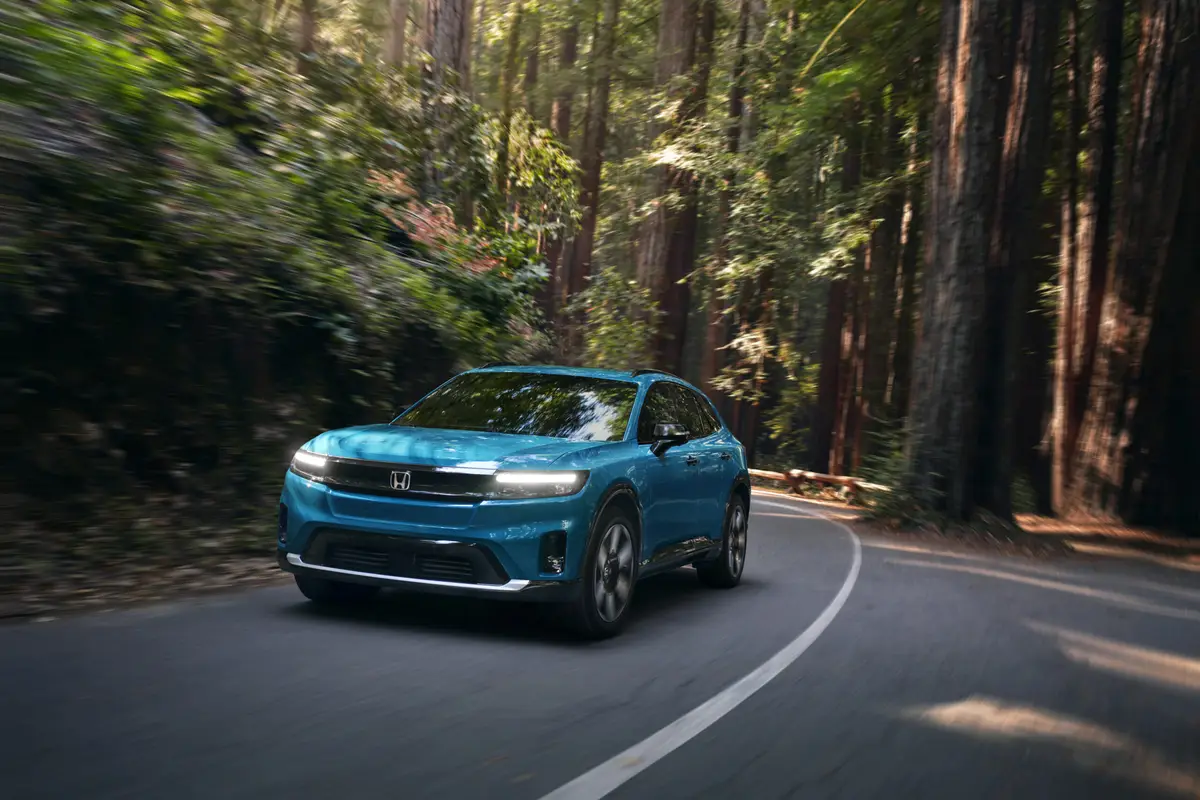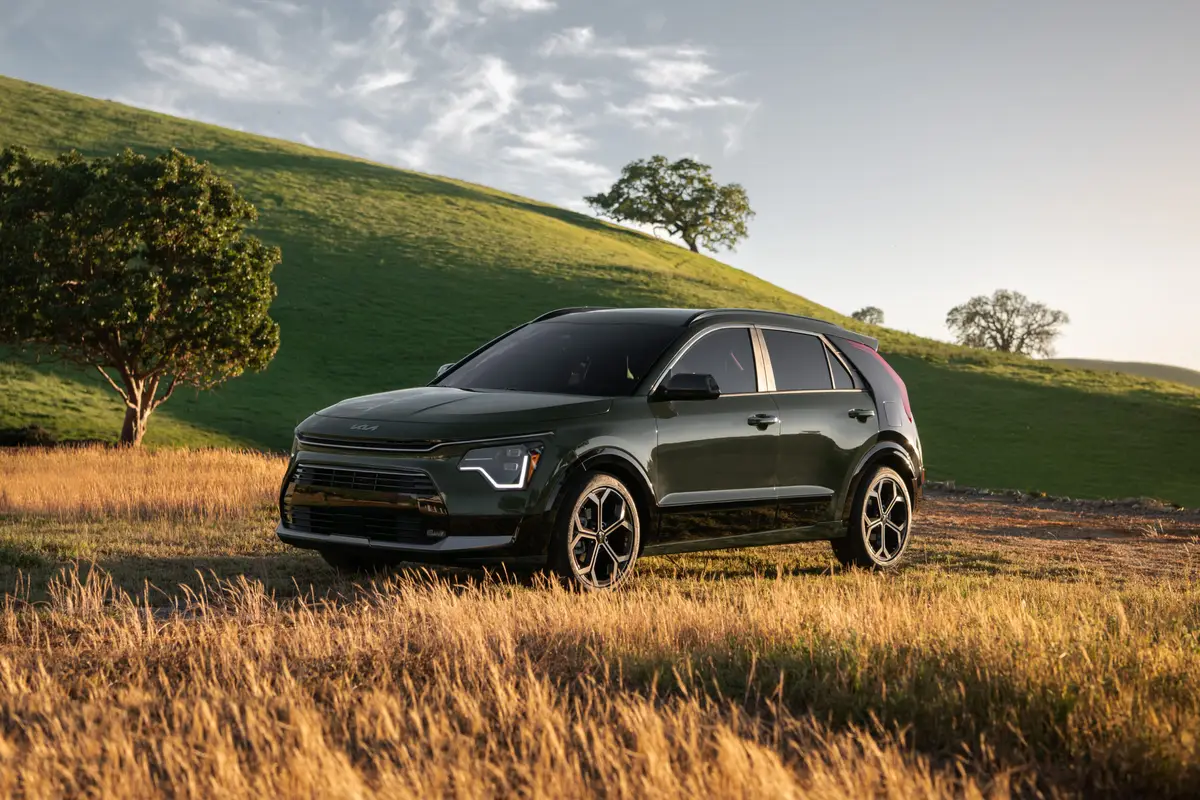chicagotribune.com's view
How pleasant when motorist after motorist pulls alongside to flip you a single-digit salute–and it’s a thumb!
The 2001 Chrysler PT Cruiser that arrives in showrooms next month does that.
The ’30s-’40s retro-style machine is a car for federal emissions purposes and a truck for federal fuel-economy regulations, but when it comes to owners, it’s a “duffel bag”–a cross between sedan/wagon/van, and, basically, “whatever you consider it to be,” said John Miller, vice president of product planning for DaimlerChrysler.
But don’t call Cruiser a Neon derivative, the DaimlerChrysler folks plead. Cruiser shares parts and components with Neon, but it’s built on its own platform, one with a 2-inch shorter wheelbase and 6-inch shorter overall length. But thanks to a tall roof line it offers perhaps three times the cabin room and comfort of any Neon–ditto any Volkswagen Beetle, whose cabin pales in comparison with a Cruiser.
The PT Cruiser comes in base, Touring and Limited versions distinguished by price (low) and standard equipment (lots).
We expected the main attraction of Cruiser to be looks at the expense of performance, another chapter in the Chrysler saga in which vehicles such as the Viper and Prowler take the breath away but leave lots to be desired in terms of roadability.
After spending time with the Limited with automatic and Touring with 5-speed manual (no base models available to drive), it’s obvious Cruiser blends good looks and decent performance.
PT performs admirably thanks to the peppy 2.4-liter, 150-horsepower 4–borrowed from the Dodge Stratus and Chrysler Cirrus, not the Neon.
The drive course, which included mountain roads, meant pressing the pedal hard to generate enough oomph to get up the steep grades. But the Cruiser handled them far better than the rival Ford Focus, which needed to pause for a gulp of air whenever spotting an incline during tests through the lower mountains along the East Coast.
The 2.4 has decent power, but the PT is called the Cruiser, not the Racer. There’s the typical 4-cylinder growl at takeoff, but it’s muffled–and doesn’t last very long. The 20 m.p.g. city/25 m.p.g. highway rating with automatic, 20/26 with the standard smooth, short-throw 5-speed manual testifies that economy takes precedence over muscle.
PT comes with P195/65R15 all-season radial tires as standard, lower-profile P205/55HR16 all-season radials as optional (standard on the Limited). Initially, the 16-inch treads felt a bit firm on the Limited and seemed to transmit more than the usual road feel back into the wheel and seat. But it only took about 20 minutes driving and the onset of some very twisty roads to forget about firmness and enjoy their road-holding ability.
D/C officials said the 16-inch tires are designed for optimum handling rather than cushioned ride. A softer “ride” tire eventually will be offered to lessen tar-mark impacts. We’d still opt for the 16-inch tires with the wider footprint for better road grip and handling.
On open stretches at 80 m.p.h., engine, transmission, suspension, steering and tires were in harmony with one another and the road. At 85 m.p.h. the seat-of-the-pants feeling was not to stretcht he limits to o much more.
Some insist Cruiser deserves a more potent engine, especially since Chrysler has developed a concept version called the GT Cruiser with a turbocharged 2.4-liter that develops 200 h.p. Stay tuned. But be patient. VW waited a year before adding a turbo 4 to the Beetle.
What’s most impressive about the Cruiser, other than styling highlighted by a Prowler grille, push-button chrome door handles and chrome Chrysler winged logos on hood and decklid, are its “surprise-and-delight” features.
Front seats, for example, are fastened on a raised platform beam above the floor rather than on metal rails attached to the floor. The beam adds more side-impact protection.
And it means you sit high like in a mini-van or SUV for good down-the-road visibility. Without metal rails on the floor, rear-seat passengers have more foot room–without scuffing shoes on those rails. The raised opening means warm air from the heater is directed under the seat to the feet of passengers in steerage. Nice touch.
There’s also a novel rear cargo shelf that moves up or down into five positions, including one in which a plastic leg pulls out from underneath, making the shelf a table for tailgating or picnicking.
The shelf holds up to 100 pounds of party materials and if needed, flips over to expose a rubberized coating to hold wet swimsuits or flower pots brought home from the nursery. The shelf also fits into vertical slots in back to stand as a wall to give your pet room to roam.
The 60/40 split rear seats fold flat and flip over against the backs of the front seats or can be removed (wheels are attached to make this easier) for more cargo room.
The front passenger seat back also folds flat to serve as a lunch or work table that can hold a personal computer. With passenger and rear seats folded, an 8-foot ladder slips inside, and you can still close the rear hatchlid.
The fact that all but the driver’s seat fold flat to provide massive cargo capacity is what won Cruiser federal ranking as a truck for fuel-economy purposes. The ranking was vital because the automaker will use Cruiser’s high mileage to offset the low mileage of the hot selling V-8 powered Dodge Ram trucks in meeting the government’s corporate average fuel economy (CAFE) regulation calling for each automaker’s fleet of trucks to average 20.7 m.p.g.
Other noteworthy items include sensors that turn the dome light on and unlock the doors if an air bag deploys, rear doors that open an unusually wide 74 degrees for easy entry/exit, tire gauge and pen/pencil holders in the glovebox, a mini spare under the vehicle that drops down when needed, center-console coin holders with rubber pouches so the coins don’t rattle, and dual front and rear cupholders.
We had some gripes, however. Despite placing power window controls in the center of the dash rather than on the door to improve leg room, the large map holde r in the door protrudes to strike you just below the knee. Also, to reduce glare through the sunroof, the glass needs a much darker tint.
And, the outside mirrors need to be moved forward on the door an inch or two because they are too close now and require pinpoint adjustment for proper side and rear vision. And the taillamps are small and so far off to the sides that when following a Cruiser on a sunny day, it took a split second longer than normal to determine whether the brakes had been applied.
Prices will force some jaws to drop. The base Cruiser starts at $15,450, Touring at $16,590, Limited at $18,620. Add $550 for freight to each.
Standard equipment in all models includes air conditioning, AM/FM stereo, power windows, dual air bags, rear-window defroster, solar glass, coat hooks, floor mats, locking glove box, tilt steering, power brakes and steering and 5-speed manual.
Touring adds power locks, power heated mirrors, remo te keyless entry w ith panic alarm, light group (visor mirror lights, console flood light, and front/rear power plugs), flat folding front passenger seat, rear-seat headrests, assist handles above all four doors and a rear cargo net. Later in the model year a drawer will be added under the front passenger seat and the price will increase to account for it.
Limited includes all that plus leather/suede trimmed seats that not only are non-slip but also put suede along the back and bottom (to avoid the hot-seat problems in mid-summer typical of leather), leather-trimmed steering wheel and shift lever, power moonroof, overhead console with temperature and compass readings, cruise control, embroidered floor mats with “PT” lettering, chrome exhaust tip, 16-inch radials, front fog lamps, side air bags and power driver’s seat height control (fore and aft movement is manual). Later in the model year a heated driver’s seat with lumbar control will be added, which will boost the base price.
Stand-alone options on all models include automatic transmission at $825, anti-lock brakes with traction control at $595, radio upgrade with cassette/CD player at $225, roof rack at $140, engine block heater at $20, and a smoker’s package (ashtray replaces one of the four cupholders) at $20.
Items that are options on the base or Touring but standard in the Limited are side air bags at $350, power driver’s seat height control at $100, overhead console at $150, speed control at $225 and power moonroof at $665 for the touring edition, $750 for the base model (which also adds door assist handles and the light group).
Feature notable by its absence? Four-wheel-drive.
Final thought: With low supply and high demand, get in line now and be prepared to pay top dollar.
>> 2001 Chrysler PT Cruiser Limited Wheelbase: 103 inches Length: 168.8 inches Engine: 2.4-liter, 150-h.p., 16-valve 4-cylinder Transmission: 4-speed automatic Fuel economy: 20 m.p.g. city/25 m.p.g. highway Base price: $18,620 Price as tested: $20,040. Includes $595 for ABS with traction control and $825 for automatic. Add $550 for freight. Pluses: Awesome looks. Awesome interior room with folding seats to convert it to mini-van cargo proportions. Awesome surprise-and-delight features. Simply an awesome machine at an awesome price that includes a host of standard equipment. New benchmark for small cars, though it is classified as a truck for mileage purposes. Minuses: Sunroof glass needs more tint. Outside mirror too close to driver. Map pocket on driver’s door too big. If only it offered AWD. >>
Latest news



